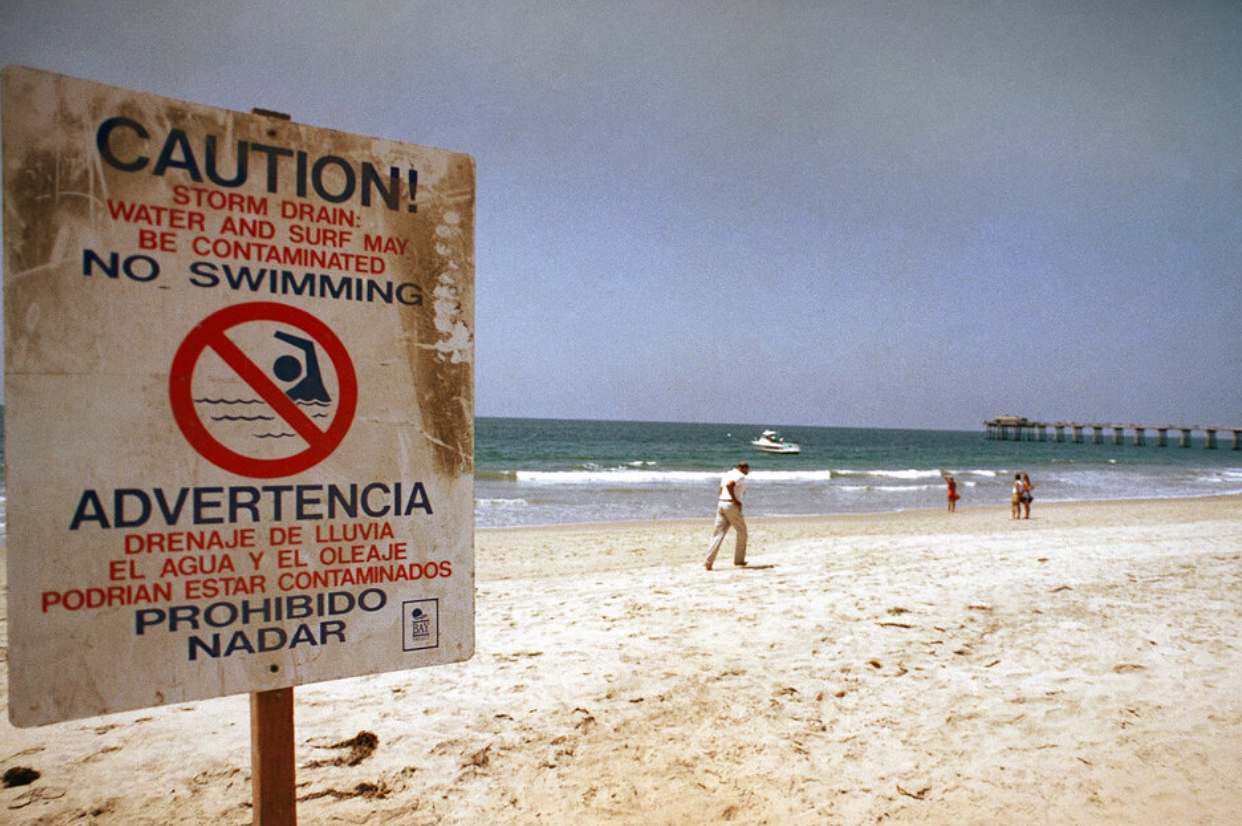Understanding the impact of high bacteria levels leading to beach closures across the United States is crucial for protecting public health and the environment. When bacteria levels exceed safe limits, it can pose serious risks to swimmers and beachgoers, potentially leading to illnesses such as gastrointestinal issues, respiratory infections, and skin rashes. Additionally, high bacteria levels can harm aquatic ecosystems, disrupting the balance of marine life and causing long-term environmental damage.
By monitoring and addressing sources of bacterial contamination, such as sewage overflows, stormwater runoff, and animal waste, we can help prevent beach closures and protect both human health and the natural environment. Collaboration between government agencies, environmental organizations, and the public is essential in addressing this ongoing issue and ensuring the safety and cleanliness of our beaches for future generations.

How to Interpret Beach Closures Related to High Bacteria Levels
Beach closures due to high bacteria levels are typically put in place to protect public health and safety. When bacteria levels are elevated, there is an increased risk of contracting illnesses such as gastrointestinal infections, skin rashes, and respiratory issues. It is important for beachgoers to understand how to interpret these closures and take appropriate precautions. If a beach is closed, it is best to avoid swimming or coming into contact with the water to prevent potential health risks.
It is also advisable to avoid consuming seafood caught in the area during a closure, as it may have been exposed to contaminated water. Additionally, it is important to pay attention to any warning signs or advisories posted at the beach, as they provide important information about potential health risks. It is also a good idea to check with local health departments or environmental agencies for updates on when the beach is safe to visit again. By staying informed and taking necessary precautions, beachgoers can help protect themselves and others from the potential dangers associated with high bacteria levels in the water.
Types of Bacteria Found at Beaches and Their Role in Closures
Beaches are home to a wide variety of bacteria, some of which are harmless and even beneficial to the ecosystem, while others can pose a risk to human health. One common type of bacteria found at beaches is fecal coliform bacteria, which comes from the feces of warm-blooded animals and can indicate the presence of harmful pathogens. Another common type is enterococci bacteria, which are also found in the intestines of warm-blooded animals and can cause infections in humans.
These bacteria can enter the water through various sources, including sewage overflows, runoff from agricultural areas, and even swimmers themselves. When levels of these bacteria exceed certain thresholds set by health officials, beaches may be closed to protect public health. While closures can be inconvenient for beachgoers, they are necessary to prevent the spread of illness and ensure the safety of those who visit the beach.
In addition to monitoring bacteria levels, beach managers also take steps to reduce the sources of contamination, such as improving sewage infrastructure, reducing runoff from urban areas, and educating the public about the importance of proper waste disposal. By working together to address the sources of contamination and monitor bacteria levels, we can help keep our beaches safe and enjoyable for everyone.

Health Risks of Bacteria Leading to Beach Closures
Bacteria in water can pose serious health risks to beachgoers, leading to closures of popular beaches. When high levels of harmful bacteria, such as E. coli, are present in the water, it can cause a range of illnesses in swimmers, surfers, and other beach enthusiasts. These bacteria can enter the water from various sources, including sewage runoff, animal waste, and stormwater runoff. When people come into contact with contaminated water, they may experience symptoms such as diarrhea, vomiting, skin rashes, and respiratory problems. In severe cases, exposure to harmful bacteria can even lead to more serious illnesses such as infections and gastrointestinal disorders.
Beach closures are necessary to protect public health and prevent the spread of bacterial infections among beachgoers. In addition to causing illness in humans, high levels of bacteria in the water can also have negative effects on marine life and ecosystems. To reduce the risks of bacterial contamination at beaches, it is important for communities to address sources of pollution and implement measures to improve water quality.
This can include better sewage treatment, stormwater management, and public education campaigns to raise awareness about the importance of keeping beaches clean and safe for everyone to enjoy. By taking proactive steps to prevent bacterial contamination, we can help ensure that our beaches remain healthy and enjoyable places for recreation and relaxation.
Other Reasons for Beach Closures Beyond High Bacteria Levels
Beach closures can occur for a variety of reasons beyond just high bacteria levels. One common reason for beach closures is inclement weather conditions, such as rough surf, strong currents, or severe storms. These conditions can pose a significant safety risk to beachgoers, making it necessary to close the beach until the weather improves. Another reason for beach closures is pollution, which can come from a variety of sources including runoff from nearby roads, farms, or industrial facilities.
Pollution can contaminate the water and pose a health risk to swimmers, leading to closures in order to protect public health. Additionally, beach closures can also occur due to natural events such as algae blooms or jellyfish infestations. These events can make the water unsafe for swimming and necessitate closures until the situation resolves itself. Finally, beach closures can also be necessary in order to protect wildlife and their habitats.
For example, closures may be put in place during nesting season for endangered species such as sea turtles in order to prevent disturbances that could harm the animals or their offspring. Overall, beach closures can be necessary for a variety of reasons beyond high bacteria levels, all with the goal of ensuring the safety and well-being of beachgoers, wildlife, and the environment.

Further Reading on Beach Closures and Public Health
Beach closures and public health are topics that have gained increasing attention in recent years due to the potential risks associated with contaminated water and pollution. Further reading on this subject can provide valuable insights into the various factors that contribute to beach closures, such as sewage overflow, agricultural runoff, and industrial waste. Understanding the impact of these pollutants on public health is crucial in order to develop effective strategies for protecting beachgoers and the environment.
By exploring the research and data on beach closures, readers can gain a deeper understanding of the potential health risks posed by contaminated water and the importance of monitoring water quality at beaches. Additionally, further reading can shed light on the role of government agencies, environmental organizations, and community initiatives in addressing these issues and promoting safe and clean beaches for all.
By staying informed and educated on the topic of beach closures and public health, individuals can advocate for stronger regulations, increased funding for water quality testing, and greater public awareness of the risks associated with swimming in polluted waters. Ultimately, further reading on this subject can empower readers to take action to protect their health and the health of their communities by advocating for cleaner beaches and improved water quality standards.
